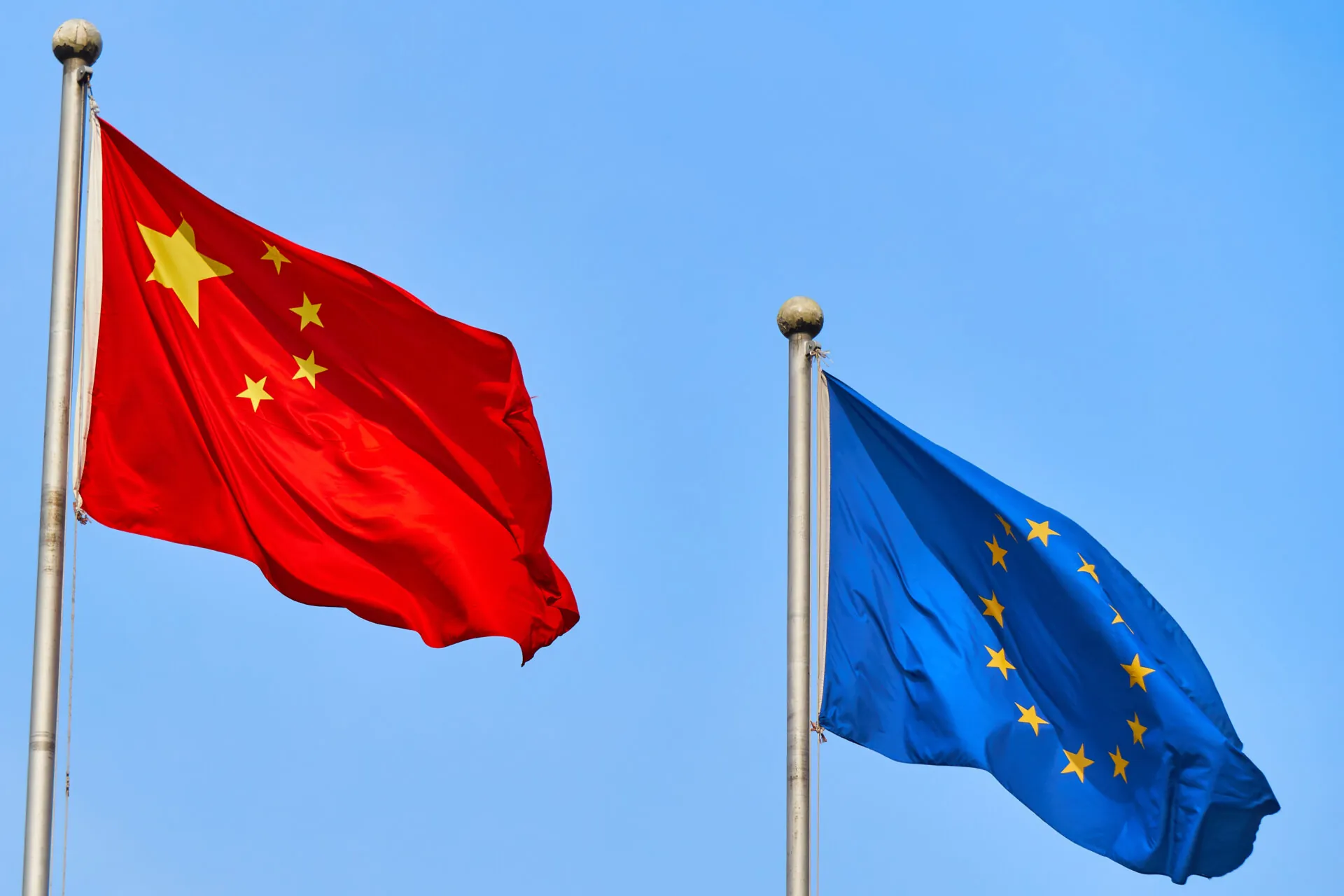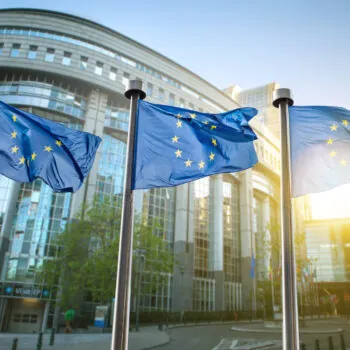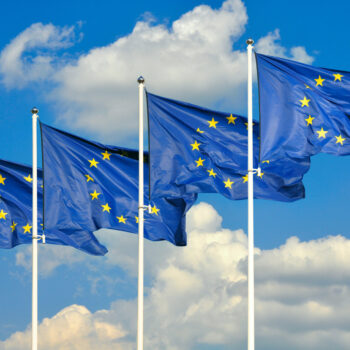This article by Byford Tsang and Belinda Schäpe was written as part of the compendium by the European Policy Centre.
EU-China relations have undergone significant turbulences since the publication of the EU-China strategic outlook four years ago, in which the EU defined China as a ‘partner, competitor and a systemic rival’. Rivalry and competition in the trinity of the EU’s approach appear to have gained the upper hand in EU-China relations since then. Despite the cacophony of voices advocating for different approaches to EU-China relations from both sides, they all agree that the EU and China should maintain cooperation on climate change. This is confirmed by the readouts of all recent heads of state-level meetings between the EU and China.
However, there are major contradictions in how the EU and China perceive bilateral climate cooperation. Von der Leyen described EU-China climate cooperation as an “island of opportunities” in her recent speech on EU-China relations. China’s top diplomat Wang Yi, on the contrary, made clear that China’s bilateral climate cooperation cannot remain an “oasis in the desert”. Is there a way to ensure the ‘island of opportunity’ is not submerged by the rising levels of geopolitical waves or to prevent the “oasis in the desert” from being engulfed by sandstorms in EU-China relations?
The recent report by the UN’s top climate science body made clear that we are way off track to achieve the global climate targets under the Paris Agreement, and we are seeing a continued increase in some of the worst climate impacts and extreme weather events. Both the EU and China have recently experienced the worst floods and heat waves in decades.
There is little reason to doubt the intrinsic value of cooperation between two of the world’s largest emitters to address climate change. It goes without saying that it is in both China’s and the EU’s interests to act on climate, considering the security implications of rising climate impacts and the economic benefits that can be reaped from the growing clean technology markets.
The “EU and China Partnership on Climate Change”, a document issued at the 8th EU-China Summit in 2005, remains the basis of EU-China climate cooperation. The partnership is supported by action plans, dialogues, and research workstreams on issues ranging from energy efficiency and carbon capture to climate adaptation and hydrogen. The commitment to climate cooperation was renewed in 2010, 2015 and 2021 by EU-China joint statements on climate, the last of which has led to the establishment of the High-Level Environment and Climate Dialogue at the cabinet level.
Official EU-China dialogues on climate serve as coordination channels for the annual international climate talks – the Conference of the Parties (COP) under the UN Framework Convention on Climate Change (UNFCCC). The EU and China have issued joint statements ahead of key climate conferences in the last decade, including COP21 in Paris and COP26 in Glasgow, signalling their determination to uphold their obligations to the UN’s climate agreements. These common understandings between the EU and China (and between the US and China) have helped facilitate a more cordial relationship between developing and developed countries ahead of international negotiations. This relationship has set the tone ahead of climate talks and minimised fights during the negotiations, such as the one which led to the failure of the COP15 talks in Copenhagen.
The technical dialogues and joint research projects under the EU-China climate cooperation framework have facilitated convergence between the EU and China on climate policies. Notable examples of policy convergence include China’s adoption of an EU-styled carbon emissions trading scheme and the development of an EU-China sustainable finance classification system that laid the foundations for attracting financial flows towards sustainable projects. These policy tools and shared policy expertise should, in turn, enable China to adopt more progressive climate policies.
The case for why the EU and China should work together on climate change is clear, but it does not follow that cooperation would produce the desired outcome. The current approach, mostly based on technical cooperation and high-level exchanges to deliver change, has started to show its limits:
- The scope of these technical initiatives does not address the political obstacles to the climate and energy transition. For example, energy security concerns, supercharged by the volatility of international energy markets after Russia’s invasion of Ukraine, are driving a relapse in coal power plants in China. The scope of the current EU-China climate and energy dialogues does not cover contentious climate-related trade issues, such as the implications of the EU’s carbon border adjustment mechanism (CBAM) or state aid in green energy sectors.
- The pace of policy convergence is not fast enough to keep the global climate safe. China’s official climate targets and accompanying policies are only consistent with a 3°C warming trajectory, which breaches the 2°C threshold in the Paris Climate Accord. By comparison, the EU’s official 2030 climate targets are consistent with the 2°C goal, but not with the more stringent 1.5°C target of the Paris Agreement.
- The notion that EU-China coordination on climate negotiations ahead of climate summits helps facilitate better outcomes is questionable. The pre-summit common understandings and statements have not resulted in China aligning its climate targets with the Paris Agreement. China is able to sidestep questions on its lack of ambition by pointing to the failure of Western countries to meet their climate finance obligations to developing countries. The EU is also growing increasingly impatient at the lack of offers from China. At the COP27 summit in 2022, the EU publicly called China to take responsibility for contributing to the Loss and Damage Fund, a position that Beijing considers a red line as it is under no obligation to contribute to international climate finance under the UN framework.
- Despite willingness from both sides at technical and ministerial levels to maintain dialogues on climate, they are increasingly vulnerable to tensions in the broader relationship. For example, following Nancy Pelosi’s visit to Taiwan, Beijing unilaterally suspended US-China climate cooperation, suggesting that the ‘no-oasis-in-desert’ approach takes precedence in Beijing’s view. Climate cooperation cannot prevail amid conflicts in the wider relationship.
The inability of EU-China climate cooperation to produce the desired outcomes does not warrant the end of such engagements. On the contrary, it calls for a discussion on the building blocks of effective climate diplomacy between the EU and China. EU-China climate diplomacy should be a mechanism to accelerate domestic and international climate action. This would require the EU and China to maintain the bilateral high-level and technical exchanges, address the tensions that arise at the intersection of climate action and geopolitical interests, and engage in reforms of international financial institutions to scale up climate finance.
Main challenges and opportunities
Tackling global climate change requires a fundamental transformation of our energy, trade, and financial systems. As such, EU-China climate diplomacy should touch upon all of these areas.
Energy Security
For over a decade, the EU and China have shared experiences in decarbonising energy and power systems through technical cooperation on emission trading, power grid, and energy efficiency. However, the current dialogue formats are not designed to address energy security concerns in the transition. This issue has been made more acute by the fallout of Russia’s war in Ukraine.
For the EU, the war has revealed the vulnerability of fossil fuel dependence and strengthened the role of renewables in safeguarding European energy security. But it also led to short-term fallbacks on coal power in some member states and a dash for gas to replace Russian supplies. This has undermined the EU’s climate leadership role, especially in the Global South. The weakness in its energy supply chain has precipitated a view that the EU should diversify its clean energy technology supply chain. The EU has since proposed legislation that mandates re-shoring parts of the clean tech value chain.
For China, the tightening of the global gas market amid rising tensions with the West and challenges in the domestic energy market has sharpened Beijing’s focus on energy security. Since the start of the Russian invasion, China has fallen back on relying on the dirtiest fossil fuel: coal – “as dictated by China’s resource endowment”. The significant scale of China’s coal expansion plans directly threatens the 1.5°C temperature goal of the Paris Agreement.
China and the EU should address issues concerning energy security in their existing dialogues at all levels, including those on climate, energy, and trade. These dialogues should prioritise addressing the role of renewables in ensuring energy security, securing stable green tech supply chains, and aligning policy responses to the energy security crisis with the climate goals of the Paris Agreement.
Climate-related trade measures
The potential fallout over climate-related trade policies poses another challenge to effective EU-China climate diplomacy. The EU’s CBAM, proposed to ensure a fair price on carbon-intensive imports, has angered some of the EU’s trading partners. China, together with other emerging countries, has criticised the measures as unilateral and discriminatory, undermining trust in the multilateral frameworks. Beijing has yet to announce a response to the mechanism, which is due to enter into force later this year, but it is likely to strain future EU-China dialogues on climate and trade.
China’s dominance across most renewable technologies makes its global supply chains highly vulnerable to disruption caused by trade or geopolitical tensions. The International Energy Agency (IEA) has called upon countries to diversify their clean energy supply chain to manage these vulnerabilities. The EU has responded with a strategy to de-risk its green supply chains through re-shoring and ‘friend shoring’. The strategy has been laid out in the recently published EU Green Deal Industrial Plan, Critical Raw Materials Act (CRMA)22 and the Net Zero Industry Act (NZIA). For the Plan to succeed, the EU would need to complement the focus on import substitution with coherent offers for third countries to move up clean tech value chains. Cooperation that is limited to safeguarding raw minerals can be perceived as ‘extractivist’ and alienate the EU’s partners.
China views these efforts with scepticism. While Chinese state-owned enterprises (SOEs) doubt that the EU can compete in solar technologies, Chinese policymakers are reportedly considering solar export restrictions to the EU if the latter moves towards a more restrictive approach on sensitive technologies transfers. These tensions over climate-related trade measures, if not properly managed, could lead to disruption in EU-China trade and renewable technology supply chains. The EU and China should manage their competition on clean technologies and minimise the risk of supply chain disruptions through continued dialogue. Both the EU and China should ensure that the policies they put in place to compete with one another, such as export controls and re-shoring targets, do not impact the chances of the Global South from playing a role in the supply chains for renewable technologies and getting a slice of pie in the global clean economy.
Climate finance and international financial system reform
The question of responsibility in international climate finance contributions is a potential flashpoint in international climate negotiation and another obstacle to EU-China engagement on climate. Under the ‘common but differentiated responsibility’ principle of the UN Climate Convention, rich nations should take on more responsibility to cut greenhouse gases (GHG) and should provide the financial means to support developing countries to decarbonise their economies. Despite recent progress, developed countries have not lived up to the promise to provide $100 billion to support developing countries addressing climate change. China is not obliged to make any international finance contribution, but, as China’s wealth and emissions grow, so does its responsibility. With the emergence of a new fund to address historic damages from climate impacts, the EU and some developing countries have called on China to contribute to a newly established Loss and Damage Fund. China said that it would support developing countries through a bilateral South-South Climate Cooperation mechanism. So far, China has provided only 10% of the $3.1 billion pledged for a dedicated fund for South-South Climate Cooperation in 2015, and its green investments comprise only about 2% of its overseas finance.
To mobilise the trillions needed for the global transition, the EU and China should step up their climate finance offers to developing countries. Both sides should work together to explore new and innovative sources of finance, facilitate reforms of the international financial architecture, and coordinate on debt restructuring as done recently at the World Bank and International Monetary Fund (IMF) spring meetings. At the same time, they should ensure that competition over partnerships with Global South countries is managed through constructive dialogues and results in attractive development opportunities guided by partner countries’ priorities, building up production capacities and global supply chains.
Recommendations and conclusions
EU-China engagement on climate is inevitable. While China’s emissions pose a risk to European climate safety, the EU is a significant market for Chinese clean technology, and cooperation can bring innovation to both the EU’s and China’s climate policy. However, the existing bilateral mechanisms are showing their limits in accelerating climate action, and the political reality of EU-China relations is raising the hurdle for cooperation.
Effective climate diplomacy between Brussels and Beijing needs to drive accelerated climate action in the EU and China. As two of the world’s biggest emitters and aspiring ‘climate superpowers’, they must align climate policies with their Paris Agreement obligations and rebuild trust in the multilateral system. The EU and China should ensure that their actions to stay ahead in the clean tech race do not disrupt the climate transition globally. This would require the EU and China to review the scope of their existing engagement and establish new mechanisms to manage bilateral tensions arising from their domestic and international climate policies. Specifically, the EU and China should:
Renew the cooperation
Review the scope of the EU-China climate and energy dialogue in response to emerging obstacles in the climate transition
In particular, the EU-China High-Level Environment and Climate Dialogue should go beyond an exchange of views on emissions targets and a health check on domestic climate policies. It should be expanded to include discussions on the role of renewables in energy security and the systemic risk that climate impacts pose to food systems and regional security. These discussions can be underpinned by new technical initiatives, for example, as part of the EU-China Energy Cooperation Platform, and tackle emerging challenges for the transition, such as a pricing system for reserve capacity in the power market and the socio-economic impacts of the energy transition.
Work together to unlock the fiscal space for third countries’ climate transition
The combined effects of COVID-19, the inflationary impact of Russia’s war and an appreciating dollar have squeezed the fiscal space for many developing countries, limiting their ability to fund the climate transition. The EU and China should engage in consultations on how they could jointly unlock fiscal space in developing countries. This could include issues related to capital adequacy reform – recommended by a G20-commissioned report34 – to boost the investing capacity of multilateral development banks as well as a new North–South finance pact on climate and development, which will be discussed at the Summit for a New Global Financial Pact in June 2023, hosted by France.
Manage the competition
Mainstream climate into EU-China high-level dialogues
Climate needs to be on the agenda of all relevant dialogues on trade, economy, and energy between the EU and China. This will allow both sides to manage tensions from the CBAM and industrial policies (e.g. NZIA and CRMA) on clean technology sectors.
Engage in a race to the top on climate finance
To encourage China to step up in climate finance, the EU should make competitive finance offers to developing countries. This would require the EU to forge a coalition of countries to define a path ahead for the Loss and Damage Fund and to double climate adaptation finance by 2025. At key multilateral moments in 2023, such as the Financial Pact Summit, the third Belt and Road Summit and COP28, China should lay out a clear roadmap to deliver the pledged $3.1 billion fund for climate cooperation with the Global South and its promise to support renewable energy growth in developing countries. That would earn China diplomatic clout and pressure Western donors to raise their stakes on climate finance.
Engage in a responsible competition to secure stable clean technology supply chains
Any export ban on clean energy manufacturing technology or critical mineral deals with developing countries that is limited to mineral extraction will not support emerging economies to move up the clean tech value chains. The EU and China should ensure the measures to increase their edge in clean energy supply chains are complemented with offers to developing countries to grow their clean industry sectors. This would not only help increase resilience in clean tech supply chains, but also provide economic incentives for developing countries to accelerate their climate transitions and “lock in” support for higher climate ambition.


